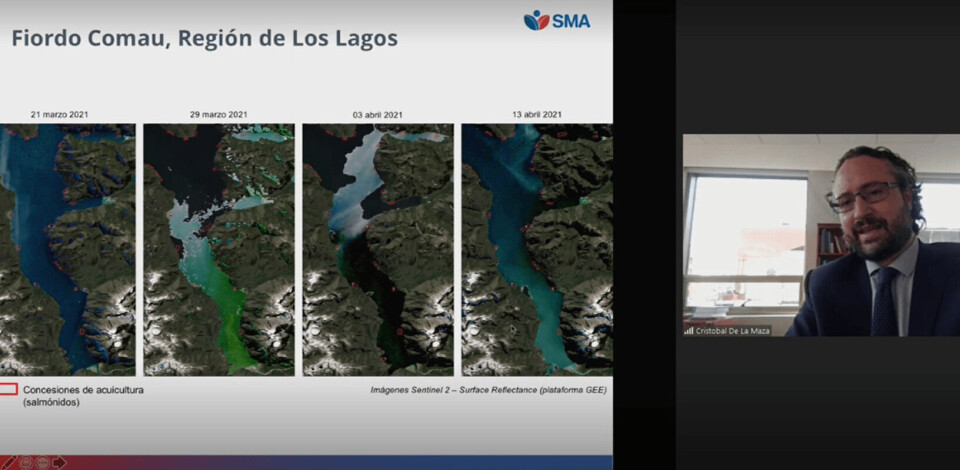
Salmon farms ‘may have contributed to algae deaths’
Nutrients from fish farms could have contributed to harmful algal blooms (HABs) that have killed around 6,000 tonnes of farmed fish, the country’s Superintendent of the Environment, Cristóbal de la Maza, has told politicians.
He was speaking during a special session of the Senate Environment Committee held to discuss the HABs in Los Lagos and Aysén regions.
De la Maza stated that the environment agency (SMA) is carrying out sampling in 12 points of the Comau Fjord in Los Lagos, four of them at Salmones Camanchaca’s Porcelana farm, to measure the effects on the environment and possible infractions of regulations.
Load capacity
“The Porcelana centre is the one that had the highest mass mortality and, moreover, was substantially delayed in the removal of the mortality,” said de la Maza, adding that 300 tonnes of dead salmon in the farm remained without being moved for more than a week, during which the levels of hydrogen sulphide exceeded 80 parts per million due to the decomposition of fish.
The SMA chief raised the relevance of analysing the concentration of current salmon farming production, where in some areas it “would provide the conditions for HAB events due to the contribution of nutrients to the marine environment”. Linked to this, he stressed that the load capacity per farm should be reviewed.
High-risk areas
Flavia Liberona, executive director of the Tarram Foundation that promotes sustainable development, said that every salmon farm should be required to present an Environmental Assessment Study, as well as the corresponding Concessions Group, together with regular load capacity for the site.
“The Risk Atlas of the Ministry of the Environment (MMA) already indicated that fjords are high-risk areas for HABs, and this was not taken into account when increasing the biomass of salmon farming centres,” Liberona said.
Arturo Clément, president of producers’ organisation SalmonChile, highlighted the advances of the industry to be able to face the mortalities caused by HABs: port unloading stations, silage, silos doubled in size and the processing capacity of reduction plants tripled, together with a greater availability of high-seas fishing vessels to the transfer morts for rendering.
Other advances included the possibility of transferring live fish, better public-private coordination, aquaculture alerts, phytoplankton programs, HAB maps released for everyone due to transparency and work with the scientific world.






















































